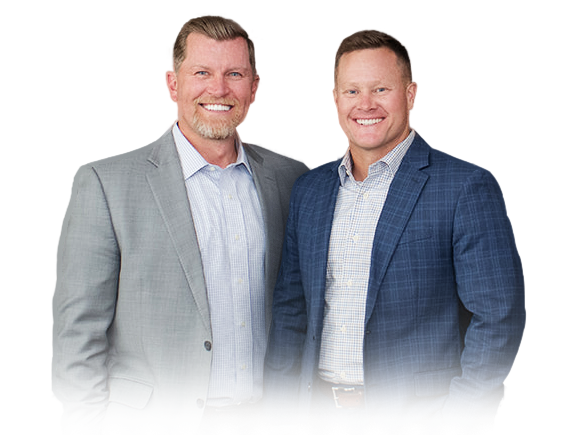
How to Report Settlement Income After a Car Accident
 After a car accident, dealing with taxes might be the last thing on your mind. At Good Guys Injury Law, our personal injury attorneys help victims in Utah understand how to report settlement income after a car accident. The IRS has clear rules about which parts of your car accident settlement are taxable income and which aren’t. Getting this right can save you from tax problems later on.
After a car accident, dealing with taxes might be the last thing on your mind. At Good Guys Injury Law, our personal injury attorneys help victims in Utah understand how to report settlement income after a car accident. The IRS has clear rules about which parts of your car accident settlement are taxable income and which aren’t. Getting this right can save you from tax problems later on.
Understanding Car Accident Settlements and Tax Implications
Car accident settlements are payments you get after filing a personal injury claim. These payments cover things like medical bills, lost wages, and property damage. Not all settlement money is treated the same for tax purposes.
The IRS looks at different parts of your settlement check separately. What you’ll pay taxes on depends on what the money is for. This is why the settlement allocation in your agreement matters.
- Medical expenses for physical injury or physical sickness
- Lost income and wages from missed work
- Property damage to your car
- Pain and suffering
- Emotional distress damages
- Punitive damages
What Constitutes a Car Accident Settlement?
A car accident settlement is an agreement where an insurance company pays you compensation for your injuries without going to court. Your settlement amount might include money for hospital bills, physical therapy, time off work, and car repairs. Most personal injury settlements happen through negotiation rather than a trial.
Key Components of a Settlement Agreement
Your settlement agreement will list different types of compensation. Compensatory damages cover actual costs like medical expenses and lost wages. Non-economic damages pay for pain and suffering from your physical injury. Some cases include punitive damages, which punish very bad behavior. Each type has different tax consequences under tax laws.
You might receive your settlement as a lump sum or as periodic payments over time. A lump sum gives you all your money at once. Structured settlements spread payments over months or years. The payment method can affect your tax liability. Some people choose periodic payments to avoid getting pushed into a higher tax bracket in one year.
IRS Rules on Injury Settlements and Taxability
 The IRS doesn’t tax all personal injury settlements. Under IRS rules, money for physical injury or physical sickness is usually non-taxable. This is covered in Section 104(a)(2) of the tax code. But other parts of your settlement might be subject to taxation.
The IRS doesn’t tax all personal injury settlements. Under IRS rules, money for physical injury or physical sickness is usually non-taxable. This is covered in Section 104(a)(2) of the tax code. But other parts of your settlement might be subject to taxation.
The settlement allocation in your agreement matters a lot. This is why working with both a personal injury attorney and a tax professional is important.
The basic IRS rule is simple: compensation for physical injuries isn’t taxable income. This includes money for medical expenses related to your injuries. But if you get money for emotional distress that isn’t from a physical injury, you might need to pay taxes on it. The IRS also taxes any interest added to your settlement amount.
Compensatory Damages vs. Punitive Damages
Most car accident settlements include compensatory damages, which make up for your losses. When these are for physical injury, they’re usually not taxed. Punitive damages are different. They punish the person who caused your accident and are always taxable, even when they’re part of a personal injury settlement. You must report punitive damages as “other income” on your tax return.
How the IRS Determines Taxable vs. Non-Taxable Income
The IRS looks at the wording in your settlement agreement. If your agreement says the money is for physical injuries, it’s usually tax-free. If it’s for emotional distress without physical injury, it’s usually taxable. This is why the way your settlement is written matters so much for tax purposes. The IRS may ask to review your agreement if they have questions about how you reported your settlement.
How to Report Settlement Income After a Car Accident
Reporting settlement income correctly helps you avoid IRS problems. You need to know which forms to use and what parts of your settlement to report.
Most people don’t deal with settlements often so that the tax rules can be confusing. Here’s what you need to know about reporting your car accident settlement on your taxes.
Step-by-Step Guide to Reporting on Tax Returns
- Gather your settlement agreement and any Form 1099-MISC you received.
- Figure out which parts of your settlement are taxable and which aren’t.
- Report taxable amounts on Form 1040, Schedule 1, Line 8z as “other income.”
- If you paid attorney fees, you may be able to subtract these from the taxable portion.
- Keep all settlement documents with your tax records.
The IRS may ask for proof that your settlement was for physical injury. Keep good records of all medical bills and treatment you received.
Most taxable settlement income goes on Form 1040 with Schedule 1. Use Line 8z for “other income” like punitive damages or taxable emotional distress payments. If your settlement included interest, report this on Schedule B. If you previously deducted medical expenses that your settlement later paid for, you’ll need to report this as income on your next tax return.
Common Mistakes to Avoid When Reporting Settlements
When reporting your settlement income, watch out for these common mistakes:
- Not reporting taxable parts of your settlement (even if you don’t receive a 1099 form)
- Forgetting to account for previously deducted medical expenses
- Missing the tax implications of interest earned on your settlement
- Failing to keep proper documentation of how settlement money was spent
- Not consulting with a tax professional about complex settlements
If you took a tax deduction for medical bills that your settlement later covered, you may need to report that money as income on your next tax return.
Lost Income and Wage Reimbursement in Settlements
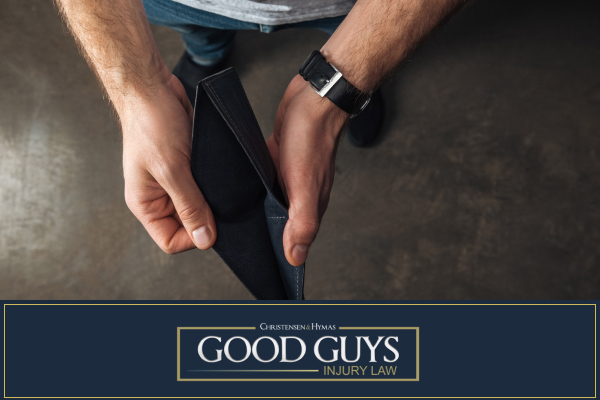 Lost wages are often part of car accident settlements. Whether you need to pay taxes on this money depends on if it’s linked to a physical injury. The IRS usually sees lost income as taxable, but there’s an exception for lost wages tied to physical injuries.
Lost wages are often part of car accident settlements. Whether you need to pay taxes on this money depends on if it’s linked to a physical injury. The IRS usually sees lost income as taxable, but there’s an exception for lost wages tied to physical injuries.
Settlement money for lost wages replaces income you would have earned if you hadn’t been hurt. The tax treatment depends on how your settlement agreement is written.
The IRS often treats lost wage payments as taxable income. This is because you would have paid income tax on these wages if you had earned them normally. But if your settlement clearly states that the lost income payment is because of physical injuries from your accident, it might be tax-free. This is why the wording in your settlement agreement matters.
Documentation Needed for Lost Wage Claims
For lost wage claims, you need good documentation. This includes your settlement agreement, proof of your normal pay, and records showing how long you were off work due to injuries. If the lost wages portion of your settlement is taxable, you may receive a Form 1099-MISC. Keep all these documents with your tax records for at least three years.
Medical Expenses and Tax Deductions
Settlement money for medical expenses from a physical injury is usually not taxable. This includes both past and future medical bills related to your accident. But there’s one exception you need to know about.
If you deducted medical expenses from a previous tax return and then got a settlement covering those same expenses, you may need to report that money as income. This is called the “tax benefit rule.”
The “Tax Benefit Rule” for Previously Deducted Medical Expenses
If you took an itemized deduction for medical bills on a past tax return and later got a settlement covering those bills, you might need to report that money as income. This only applies if you actually got a tax benefit from the deduction. The IRS doesn’t want you to get a tax break twice for the same expense.
Future Medical Expenses in Settlements
Many settlements include money for future medical care related to your injuries. This portion is typically not taxable when it’s for physical injury treatment. But if this money earns interest while you’re waiting to use it, the interest is taxable. Keep track of all medical expenses you pay with your settlement money.
Emotional Distress and Pain and Suffering Payments
 The tax rules for emotional distress damages depend on whether they stem from a physical injury. If your emotional distress is because of your physical injuries, that compensation is usually not taxable. However, emotional distress damages without physical injury are generally taxable.
The tax rules for emotional distress damages depend on whether they stem from a physical injury. If your emotional distress is because of your physical injuries, that compensation is usually not taxable. However, emotional distress damages without physical injury are generally taxable.
Pain and suffering compensation for physical injuries is typically tax-free. The key is whether your settlement ties the emotional distress to actual physical harm.
Tax Treatment of Emotional Distress
The IRS treats emotional distress damages differently depending on their cause. If your settlement says you got money for emotional distress because of physical injuries from your car accident, that money is usually not taxed. But if the emotional distress isn’t linked to physical injury, you’ll likely need to pay taxes on that portion of your settlement.
Documenting Pain and Suffering for Tax Purposes
Good documentation helps support how you report pain and suffering payments on your taxes. Keep all medical records that show your physical injuries and any mental health treatment you received. Your settlement agreement should clearly tie any emotional distress damages to your physical injuries if that’s the case.
Working with Tax Professionals After a Settlement
Getting help from a tax advisor who knows about personal injury settlements is often worth it. They can help you report your settlement correctly and find all possible tax breaks. The tax consequences of settlements can be complex, especially for larger amounts.
Your personal injury attorney and tax professional should work together to make your settlement as tax-friendly as possible.
Look for a tax professional with experience handling personal injury settlements. Not all tax preparers understand the special rules for settlement taxation. Ask about their background with similar cases before hiring them. Your personal injury lawyer may be able to suggest a good tax advisor who knows these rules.
When to Consult a Tax Professional
It’s best to talk to a tax professional before you finalize your settlement, if possible. This lets them give input on how to structure the agreement for the best tax outcome. If your settlement is already done, get tax help before filing your next tax return, especially if your settlement was large or included punitive damages.
Contact Our Personal Injury Lawyer for a Free Consultation
 Don’t struggle with settlement tax questions on your own. At Good Guys Injury Law, our Utah personal injury lawyers help you understand how to report settlement income after a car accident. We can connect you with tax professionals who know how to handle injury settlements.
Don’t struggle with settlement tax questions on your own. At Good Guys Injury Law, our Utah personal injury lawyers help you understand how to report settlement income after a car accident. We can connect you with tax professionals who know how to handle injury settlements.
Call us today for a free consultation about your car accident claim. We’ll fight to get you fair compensation while helping you understand the tax implications of your settlement.

After a car accident, learning your vehicle is a “total loss” can feel overwhelming. How to determine the value of a total loss claim is key when dealing with insurance companies that may not offer fair payment. Your car insurance company might declare your car totaled when repair costs exceed the vehicle’s value. Understanding this process helps you get the money you deserve.
At Good Guys Injury Law, we fight for Utah accident victims with total loss claims. We know insurance companies often undervalue totaled vehicles. This leaves you stuck with too little money to replace your car. Let us help you get the fair market value you deserve for your damaged vehicle.
Understanding Total Loss and Fair Market Value
When your car has major damage, your insurance company must decide to repair it or declare it a total loss. Most insurers consider a car totaled when repair costs exceed 70-80% of the vehicle’s pre-accident value. This is called the total loss threshold in Utah.
Fair market value is what your car was worth before the crash. Insurance companies use this figure to calculate your payout. Many victims don’t know that insurers often use tricks that lead to low valuations.
- Pre-accident condition
- Mileage
- Vehicle age
- Aftermarket parts
- Similar vehicles in your area
The gap between what an insurance company offers and your car’s actual value can be large. Insurance companies pay less than they should for many total loss claims.
What Does “Declared a Total Loss” Mean?
When your car is declared a total loss, it means your insurance company has decided that fixing your vehicle costs too much. In Utah, insurers use a total loss formula. They compare repair costs plus salvage value against the pre-accident market value.
Utah state regulations guide how insurers decide when a car is totaled. The total loss formula helps determine if your vehicle should be repaired or declared a total loss. When repair costs exceed a certain percentage of your car’s value, the insurance company will total it.
How Insurance Companies Define Fair Market Value
Insurance companies determine fair market value by comparing your totaled car to similar vehicles for sale locally. They check the year, make, model, mileage, and pre-accident condition. What they don’t tell you is they often use outdated data or ignore things that would raise your car’s value.
You should always check Kelley Blue Book values or search local dealers to verify the fair market value. We’ve seen cases where insurance companies valued cars at 15-20% below their true market value. This costs accident victims thousands in lost compensation.
Actual Cash Value (ACV) vs. Replacement Cost
Actual cash value (ACV) is your car’s value after depreciation—what insurance companies pay for your totaled vehicle. This figure accounts for the car’s age, condition, and mileage before the accident. Your car’s ACV is what your insurer uses to calculate your payment.
Replacement cost is what you’d pay to buy a similar car today. This amount is almost always higher than ACV. This gap explains why many drivers feel cheated when settling total loss claims. Your vehicle’s ACV might not be enough to buy a new vehicle of the same quality.
The Claims Process for a Totaled Car

Filing a claim for a totaled car involves several key steps that affect your final payment. Working through this process carefully helps you get the most money possible.
When your car is badly damaged, quick action matters. Report the accident to your own insurance company right away. This starts the claims process and speeds up your payment. Most car insurance companies follow standard steps for total loss claims.
The claims process might feel complex while you’re dealing with the stress of losing your car. Many insurance adjusters use this stress to push low offers. Stay alert and question anything that seems unfair.
Step-by-Step Guide to Filing a Total Loss Claim
- Report the accident to your insurance company immediately
- Document the damage with photos from multiple angles
- Gather proof of your car’s pre-accident condition
- Meet with the insurance adjuster for inspection
- Review the valuation report carefully
- Compare their offer to independent sources like Kelley Blue Book
- Negotiate if the offer seems too low
During the inspection, provide all evidence of your vehicle’s value—maintenance records, recent repairs, and photos from before the accident. These records help prove your car’s pre-accident condition was better than the insurer might claim.
How Insurance Companies Calculate Total Loss Value
When your car is totaled, understanding how insurance companies set its value helps you get fair payment. Insurance adjusters use formulas that don’t always work in your favor. Knowing their methods helps you spot low offers.
The basic calculation starts with your vehicle’s actual cash value (ACV). This equals the fair market value minus depreciation plus salvage value. Insurers often add hidden deductions to their formulas. They might inflate the salvage value to justify a lower payout.
Many insurance companies also undervalue aftermarket parts in your vehicle. The insurance adjuster might not count these improvements in your settlement unless you fight for them. Always point out any upgrades or special features your car has.
The Formula Used by Car Insurance Companies
Car insurance companies use math formulas to decide if your car is a total loss. They weigh your car’s pre-accident market value against repair costs and salvage value.
If your car’s market value is $15,000 with $12,000 in damage, and its salvage value is $3,000, the insurer will likely declare it a total loss. The repair costs plus salvage value ($15,000) equal the car’s worth. In this case, they’ll pay you the market value minus your deductible instead of fixing it.
Factors That Affect Your Vehicle’s Valuation
Several key factors influence how much your insurance company offers for your totaled car:
- Mileage – lower readings mean higher value
- Pre-accident condition – good maintenance records help
- Accident history – fewer prior accidents means better value
- Aftermarket parts – custom wheels and stereo systems add value
- Vehicle age – newer cars retain more value
Your car’s pre-accident market value is based on these factors. Keep all maintenance records and receipts for upgrades. These documents strengthen your claim and help prove your car’s true worth.
How Auto Insurance Companies Pay for Total Loss Claims

Once your vehicle is declared a total loss, knowing how insurance companies handle payments helps you plan the next steps. Most insurers process payouts within 2-4 weeks after approving a claim. The time varies by company and case.
Payment issues often arise with leased or financed vehicles. If you still owe money on your car, the insurance company pays your lender first. You only get the remaining funds after your loan is paid off. Sometimes, this leaves you with nothing.
The payment process can be frustrating when there’s a gap between what you owe and what insurance pays. Gap insurance covers this difference. Without it, you might end up paying off a loan for a car you no longer have.
Will Insurance Companies Pay Fair Market Value?
Insurance companies rarely offer fair market value without a fight. First offers typically fall 10-20% below your car’s true worth. This tactic saves insurers millions yearly at the expense of accident victims.
To counter low offers, gather proof of your vehicle’s true value. Find listings for similar vehicles in your area. Present this evidence to your insurance adjuster and be ready to negotiate. Don’t take the first offer – it’s almost always too low.
Understanding Deductibles and Payouts
Your deductible directly impacts your total loss payout. This amount—which you chose when buying your policy—is subtracted from your settlement. If your car’s value is $15,000 and your deductible is $1,000, you’ll receive $14,000.
Insurance companies apply the deductible in most cases. Even if another driver caused the accident, you’ll still pay your deductible when filing through your insurance. You may get this money back later if the other driver is at fault.
Different coverage types have different deductibles. Collision coverage handles most total loss claims from accidents. Comprehensive coverage (for theft or weather damage) might have a different deductible amount.
Disputing the Insurance Company’s Valuation
When your insurance company’s offer is too low, you have options to fight for fair payment. Most drivers don’t know that settlements are negotiable. With the right approach, you can often get more money.
Start by gathering proof of your vehicle’s true value. Search for comparable vehicles currently for sale in your area. Focus on the same year, make, model, and similar mileage. Print these listings as evidence of your car’s worth.
If the insurer won’t budge, consider hiring an independent appraiser. For about $300-$500, a professional can provide an unbiased valuation. This cost often pays for itself with a higher settlement. As a last resort, you can file a complaint with the Utah Department of Insurance.
Aftermarket Parts and Their Impact on Value
Aftermarket upgrades can boost your car’s value, but insurance companies often ignore them. From custom wheels to premium sound systems, these investments should be part of your total loss settlement.
Insurance adjusters typically focus on factory features when valuing your vehicle. Unless you point out aftermarket improvements, they’ll likely overlook them. This oversight can cost you hundreds of dollars in your final payout.
Always keep receipts for parts, upgrades, and custom work. These documents prove the value that insurers can’t easily dismiss. Photos of these upgrades also strengthen your case, especially for visible improvements like wheels or body modifications.
Contact Good Guys Injury Law for a Free Claim Review

Don’t let insurance companies undervalue your totaled car. At Good Guys Injury Law, we understand the tactics insurers use to minimize payouts on total loss claims. Our team of Utah personal injury attorneys has helped many accident victims get fair payment for their damaged vehicles.
We offer free claim reviews to help you understand your options. Before you accept any settlement offer for your totaled car, call us or fill out our contact form. We’ll evaluate your case and explain how we can help maximize your recovery at no upfront cost to you.
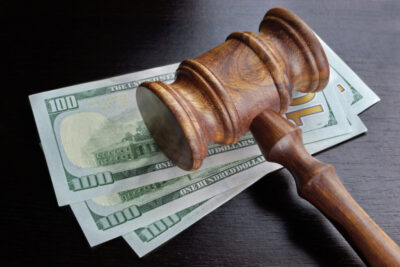
How contingency fees work in personal injury cases is simple – you pay nothing unless we win your case. Following a car accident, the last thing you need is the added stress of legal fees piling up alongside your medical bills and lost wages. At Good Guys Injury Law, our personal injury lawyers work on a contingency fee basis. This means we only get paid if you get paid.
Our law firm absorbs the financial risk, allowing you to pursue justice without any upfront expenses. This guide shows how contingency fee agreements protect Utah injury victims and make legal help available to everyone.
What Is a Contingency Fee Arrangement?
A contingency fee arrangement lets you hire a lawyer without paying anything upfront. Instead of hourly fees, your personal injury attorney gets a percentage of your settlement or court award. If you don’t win, you don’t pay attorney fees – it’s that simple.
This system gives many injury victims access to legal services they couldn’t otherwise afford. Let’s see how different payment structures work:
| Fee Type | When You Pay | Risk to Client | Best For |
|---|---|---|---|
| Contingency Fee | Only if you win | None | Personal injury cases |
| Hourly Rate | As work happens | High | Business disputes |
| Flat Fee | Before case starts | Medium | Simple legal matters |
The contingency basis creates a path to justice that’s open to everyone, not just those who can afford to pay tens of thousands in legal fees after getting hurt.
The “No Win, No Fee” Promise Explained
The “no win, no fee” promise means exactly what it says – you pay zero dollars if we don’t recover money for you. This isn’t just marketing – it’s a binding part of our contingency fee agreement that protects you fully.
If your personal injury claims don’t result in a settlement or court award, you won’t get a bill for our time or lawyer’s services. This creates a risk-free way to seek justice. Our law firm takes on all the financial risk so you can focus on getting better.
How This Benefits Accident Victims Financially
Working with a contingency fee lawyer offers three big financial benefits. First, you start your case without paying anything out of pocket. Most accident victims face medical bills and lost wages – adding legal fees would be too much.
Second, since we only get paid if you win, we’re very careful about which cases we take. If a personal injury attorney agrees to work on a contingency fee basis, they truly believe in your case. Unlike hourly lawyers who get paid no matter what, we invest our own time and money to build your case.
Typical Cases That Use Contingency Fees
Contingency fee agreements work best for personal injury cases like car accidents, slip-and-falls, workplace injuries, and medical malpractice claims. This payment arrangement exists where there’s an insurance company involved and clear injuries that deserve compensation.
This fee structure doesn’t work for criminal defense or divorce cases. Those areas usually need hourly fees because they don’t involve winning money that can be shared with the attorney.
The Contingency Fee Agreement Process

Starting a relationship with a personal injury lawyer using a contingency fee arrangement is easy. The process protects both you and your attorney while making sure everyone clearly understands how fees and costs will work during your case.
Most personal injury lawyers begin with a free consultation to review your case. If they think they can help, you’ll sign a fee agreement that spells out all terms. This document becomes the foundation of your working relationship and sets clear expectations about payment and responsibilities.
The agreement should clearly state the contingency fee percentage, how case expenses will be handled, and what happens if you win or lose. Our contingency fee lawyer will explain every part in simple terms, so you know exactly what you’re signing. We want you to feel completely comfortable with the arrangement before we start working on your behalf.
Costs vs. Fees: Understanding the Difference
Many clients don’t know that “costs” and “fees” mean different things in personal injury cases. Legal costs are the actual expenses of building your case, w feehile legal fees are what you pay for your lawyer’s expertise and time.
When working with a personal injury attorney on a contingency basis, it’s important to know exactly what you’ll owe if your case succeeds or fails. Some law firms handle costs differently than others, so ask specific questions during your free consultation to avoid surprises.
This difference matters because expenses like court filing fees and witness fees will happen regardless of who wins. Understanding how these costs are handled is just as important as knowing the contingency fee percentage.
Attorney Fees (Contingency Percentage)
The contingency fee percentage is what your personal injury lawyer earns for their services, usually ranging from 33% to 40% of your settlement. In Utah, most attorneys charge 33% if your case settles before filing a lawsuit and 40% if your case goes to trial. For example, on a $100,000 settlement, the attorney’s contingency fee would be $33,000.
This percentage covers all the attorney’s time and effort throughout your case. The exact rate should be clearly stated in your fee agreement before any work begins on your behalf.
Case Expenses (Court Costs, Expert Witnesses, etc.)
Beyond attorney fees, personal injury cases involve various out-of-pocket expenses needed to build a strong claim. These include filing fees, costs for police reports ($20-$50), medical records ($100-$500), expert witness fees ($1,500-$10,000+), and other case-related expenses.
These costs grow larger as your case moves forward, especially if it goes to trial. A simple car accident case might have expenses of a few hundred dollars, while complex cases could reach $10,000 or more. Your fee agreement should clearly explain how these expenses are handled.
Who Pays What If Your Case Loses?
At Good Guys Injury Law, we cover all costs if your case doesn’t succeed – you owe nothing for expenses or attorney fees. This removes all financial risk from seeking justice after an injury. We invest in your case because we believe in it, and we’re willing to absorb those expenses if we don’t win.
Some personal injury firms make clients repay case expenses even if they lose. This creates significant financial risk for injury victims. Always read your fee agreement carefully and ask directly about who pays for costs if your case isn’t successful.
The Financial Advantages for Accident Victims

The contingency fee structure offers several financial advantages that make it possible for accident victims to seek justice regardless of their financial situation. This fee arrangement levels the playing field against powerful insurance companies that have unlimited resources to fight claims.
Without contingency fees, many injury victims would simply have to accept whatever the insurance company offers – or nothing at all. Our law firm believes everyone deserves quality legal representation, not just those who can afford hourly fees.
The benefits include no financial risk when pursuing your claim, lawyer motivation to maximize your recovery (since their fee increases with your settlement), better negotiation power against insurance companies, and access to experienced legal help regardless of your current financial circumstances.
How Payments Work When You Win
Understanding the payment process helps you plan when your case succeeds. When your personal injury case ends with a settlement or court award, a specific sequence of events happens with the money. This process follows strict rules and should be completely transparent.
Most personal injury settlements follow this distribution pattern: First, the check comes to the law firm and goes into a special client trust account. Next, any medical bills or liens are paid. Then, case expenses are deducted to reimburse costs advanced by the firm. After that, the attorney’s fees are calculated based on the agreed percentage. Finally, the remaining balance – your money – is paid directly to you.
The Settlement Distribution Process
The settlement distribution process turns your legal victory into actual compensation. For example, on a $100,000 settlement with $10,000 in expenses and a 33% contingency fee, the math works like this: $100,000 settlement minus $10,000 costs minus $33,000 fee equals $57,000 to you. Your attorney should provide a detailed statement showing every deduction.
Fees on Reduced Offers vs. Trial Verdicts
Understanding how fees work with different settlement offers helps you make smart decisions. While going to trial might result in a larger verdict, it also means higher expenses and potentially a higher contingency fee percentage. Sometimes, a quicker settlement offer might result in more money in your pocket despite a lower total amount.
You always decide whether to accept a settlement or go to trial. Your personal injury lawyer provides advice based on their experience, but the final choice remains yours. This ensures you maintain control throughout the legal process.
What Makes a Strong Contingency Fee Case?
Not all personal injury cases have the same strength. Since personal injury lawyers invest their own time and money into contingency fee cases, they carefully evaluate each potential claim before accepting it.
Strong cases typically share certain features: clear fault by another party, serious documented injuries, adequate insurance coverage, and clients who follow medical advice. Understanding these factors helps explain why some cases might be rejected or why an attorney might suggest different fee arrangements.
Contact Good Guys Injury Law for a No-Risk Case Evaluation

You deserve expert legal help without financial worry. Our team at Good Guys Injury Law makes quality legal representation accessible through our contingency fee structure. This means you can seek justice without worrying about how to pay for a lawyer.
Our experienced personal injury lawyers will review your case for free and explain exactly how our fee arrangement works for your specific situation. We’re open about all aspects of our representation agreement so you can make informed decisions.
Contact us today for your free consultation. We offer a completely free case evaluation with an experienced attorney who will clearly explain our contingency fee percentage and answer all your questions. There are no upfront costs or hourly fees to worry about, and you have no obligation to move forward after our meeting. Let us show you how we can help with your case.

After a car accident, not all damage is physical. You might also feel ongoing pain, stress, or sadness. These are called “pain and suffering,” and they can burden your health and daily life for a long time. Many accident victims want to know how this part of a settlement is figured out and whether it can increase the amount they receive.
At Good Guys Injury Law, we help you understand how pain and suffering damages are measured and what you can do to support your claim. Whether you’re dealing with anxiety, sleep problems, or the emotional toll of physical pain, these effects matter. We believe every part of your loss should be counted, both the visible and the invisible ones.
What Is Pain and Suffering?
Pain and suffering refers to the physical and emotional pain you feel after a car accident. It includes more than just injuries you can see on the outside. It covers how your injury affects your mind, mood, and everyday life. This can mean physical pain that doesn’t go away or emotional distress like fear, anxiety, or frustration. Pain and suffering damages are considered non-economic losses because there’s no exact dollar amount tied to them.
These damages are often hard to prove, but they are very real. You deserve compensation for the toll an accident takes on your life, not just the cost of hospital bills or car repairs. Every person’s experience is different, so the compensation for pain and suffering depends on many things. Courts and insurance companies look at the whole picture, including how much your life has changed and how long your symptoms last.
Examples of Pain and Suffering
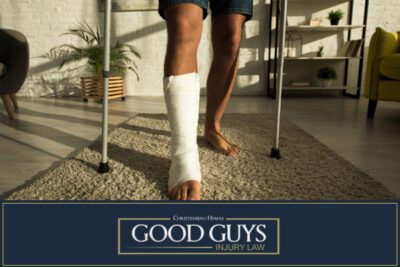
- Physical pain – Ongoing discomfort, soreness, or nerve damage
- Mental anguish – Feelings of fear, sadness, or anger after the accident
- Emotional distress – Anxiety, depression, or trauma related to the crash
- Loss of enjoyment – Not being able to do things you once loved
- Sleep problems – Trouble sleeping or nightmares
- Loss of companionship – Struggles with relationships due to the accident
- Disfigurement or scarring – Lasting changes to your appearance
Is Pain and Suffering Compensated in a Car Accident Claim?
Pain and suffering is not just something people experience—it’s a type of harm that courts and insurance companies recognize in personal injury cases. While it’s harder to measure than things like medical bills or lost wages, it still matters.
That’s why pain and suffering compensation is often part of what’s known as non-economic damages in a personal injury claim.
Part of Non-Economic Damages
Non-economic damages cover losses that don’t have a set dollar amount. Pain and suffering damages fall into this category. If you’re injured in a car accident, and you’re dealing with pain every day or struggling with emotional distress, you may be able to recover money for those losses.
The goal is to make sure you are not only paid for bills but also for how your life has changed. A personal injury lawyer can help show what you’ve been through so the insurance company takes your suffering seriously. This is why having a strong claim matters.
Included in Both Insurance Claims and Lawsuits
Whether you’re filing a claim with the insurance company or going to court, pain and suffering damages can be included. Many car accident cases settle outside of court. Still, the insurance company may try to limit what it pays. That’s why it’s important to build a strong case.
If your case does go to trial, your pain and suffering claim becomes part of the personal injury lawsuit. In either case, proving the effects on your life is key. That means showing how your injuries caused physical pain, emotional distress, or changes to your daily life.
Methods Used to Calculate Pain and Suffering

There is no one-size-fits-all pain and suffering calculator. Each method looks at your situation differently. Here are the three common ways to estimate suffering compensation after a car accident:
Multiplier Method
The multiplier method is one of the most commonly used ways to figure out pain and suffering damages. Here’s how it works: You add up all your medical expenses and then multiply that number by a value, usually between 1.5 and 5.
The multiplier is based on how serious your injuries are. For example, more severe injuries like broken bones or permanent damage may use a higher number. This is not exact math, but it gives insurance companies a starting point when deciding how much to offer in a pain and suffering settlement.
Per Diem Method
The per diem method uses a daily dollar amount for each day you suffer. That amount is then multiplied by how many days it takes for you to recover or reach your maximum improvement. It’s usually based on lost wages or a similar figure.
Let’s say your daily value is $200, and you suffer for 100 days. Your pain and suffering compensation could be around $20,000. This method works better in cases where there’s a clear recovery period. It’s another way to show what your suffering is worth.
Hybrid or Negotiated Value
Sometimes, pain and suffering is not calculated using a formula at all. Instead, the amount is negotiated between your lawyer and the insurance company. This is common in cases where the damage is hard to measure.
Your personal injury lawyer might show photos, videos, or medical records to explain the emotional and physical toll the accident had on you. While there’s no suffering calculator involved, the goal is still the same — to get fair compensation for your pain, both physical and emotional.
Factors That Affect the Value of Pain and Suffering

Pain and suffering compensation depends on more than just how you feel. Many details can raise or lower the value of your claim.
Severity of Injuries
More severe injuries usually mean more pain and a higher chance of emotional trauma. Someone with a broken spine will likely suffer more than someone with bruises. This affects the pain and suffering settlement.
Your pain and suffering lawyer will look at how serious your injuries are. Injuries that cause long-term pain, disfigurement, or disability often result in a larger payout. In personal injury law, the worse the injury, the higher the compensation tends to be.
Length of Recovery Time
The longer it takes you to recover, the higher your pain and suffering damages may be. A short recovery might mean a few weeks of discomfort. But if you need surgery or physical therapy for months, that adds to your suffering.
Courts and insurance companies consider how long you’re unable to live normally. Longer recovery time often means more emotional distress, which can increase the amount of compensation you may receive.
Long-Term Physical or Emotional Effects
Some car accident injuries never fully go away. If you’re left with chronic pain, reduced mobility, or permanent damage, those effects are considered when calculating pain and suffering damages. Emotional distress that doesn’t improve over time, like anxiety or post-traumatic stress, also increases the value of your suffering compensation.
These lasting effects can make life harder for years. In personal injury law, the goal is to recover fair compensation, not just for today’s pain, but for the suffering you’ll face long-term. The more serious or permanent the harm, the higher the compensation you may deserve.
Impact on Daily Life or Ability to Work
Pain and suffering damages often go up when the injury affects your daily routine. If you can’t do basic tasks, enjoy hobbies, or take care of yourself without help, that shows serious life disruption. Losing the ability to work or care for your family adds more emotional strain.
This disruption can lead to both financial losses and emotional distress. You may not just lose income, but you may also lose your independence or quality of life. That’s something a pain and suffering lawyer will work to show clearly in your personal injury case.
Strength of Medical Documentation
Insurance companies look closely at your medical records. The stronger and clearer they are, the more support you have for your claim. If your records show consistent treatment, a clear diagnosis, and proof of ongoing pain, it becomes harder for the insurance company to deny your suffering.
A personal injury lawyer will make sure those records are organized and complete. They can also help explain medical language in a way that shows how your injury affects you every day, physically and emotionally.
Testimony From Family or Mental Health Experts
Sometimes, what others say about you matters just as much as what’s in your medical records. If a therapist or counselor confirms emotional pain, or your family says they’ve seen big changes in your mood, sleep, or personality, that can strengthen your claim.
In personal injury cases, this kind of testimony shows the full human repercussions of your injury. It helps explain things that paperwork can’t, like emotional distress or mental anguish that affects your home or work life.
FAQs
1. How do I know if I qualify for pain and suffering compensation?
If you were hurt in a car accident and experienced physical pain, emotional distress, or long-term changes to your life, you may qualify. You’ll need proof, like medical treatment records, journal entries, or statements from others who saw the consequences on you.
2. Is pain and suffering only for serious injuries?
Not always. Even moderate injuries that cause ongoing pain and anxiety or affect your work or personal life can qualify. The key is showing how the accident changed your day-to-day experience. Medical treatment and personal documentation help support your claim.
3. Can an insurance company deny my pain and suffering claim?
Yes. Insurance companies often question non-economic damages like pain and suffering. That’s why working with an experienced car accident attorney can help. They know how to present strong evidence and push back against unfair offers.
4. How is pain and suffering calculated if there’s no exact formula?
Pain and suffering is usually calculated using the multiplier method or per diem method. Your lawyer will look at things like the severity of your injury, the length of medical treatment, and how your life was affected. Then they’ll estimate a fair amount based on that.
5. Do I need a lawyer to get pain and suffering damages?
It’s possible to file a claim on your own, but it’s much harder to win the full amount you deserve. An experienced car accident attorney can help you build a strong case, deal with the insurance company, and make sure your pain and suffering is taken seriously.
Contact Our Utah Car Accident Lawyer Today

If you’re dealing with pain and suffering after a car accident, you don’t have to go through the claims process alone. These cases can be confusing, especially when you’re also recovering physically and emotionally. At Good Guys Injury Law, we know how hard this time can be, and we’re here to help.
Our team listens to your story, explains your options in simple terms, and fights for the pain and suffering compensation you deserve. Whether you’re filing an insurance claim or pursuing a personal injury lawsuit, we’ll stand by your side every step of the way. We’ll make sure the insurance company takes your injuries and suffering seriously.
Your first meeting is always a free consultation. You don’t pay us unless we win. Call us today to speak with a personal injury lawyer who truly cares about your recovery and your future.

Getting into a car accident is stressful. But it gets even harder when the other driver doesn’t have enough insurance to pay for your injuries and losses. You might have serious damage, but the other person’s policy can’t cover the costs. That’s where underinsured motorist coverage can help.
At Good Guys Injury Law, we’ve seen how confusing this can be. Many people don’t even know what kind of insurance coverage they have until they need it. If you’re in a crash with an underinsured driver, we’ll help you understand what to do. We work to make sure your rights are protected and that you aren’t left with unpaid medical bills or other costs.
We’ll walk you through how underinsured motorist claims work, when to file, and how to avoid costly mistakes. You don’t have to figure it out on your own.
What Does “Underinsured Driver” Mean?
An underinsured driver is someone who has liability insurance, but it’s not enough to pay for all the damage. They may have the minimum coverage required by law, but it’s still too low for your real losses.
Let’s say your medical expenses and car repairs total $75,000, but the other driver’s policy only covers $25,000. That leaves a $50,000 gap. In that case, your underinsured motorist coverage can help fill the gap (if you have it).
This kind of insurance coverage gives you a financial safety net when the other driver can’t pay everything. But you have to act fast and follow the steps your policy requires. If you’re unsure what your policy includes, we’ll help you find out.
How It’s Different From Uninsured Motorist (UM) Coverage

It’s easy to confuse underinsured motorist coverage with uninsured motorist coverage, but they’re not the same. Uninsured motorist coverage helps when the other driver has no insurance at all. Underinsured motorist coverage applies when they have some, but not enough.
With uninsured motorist coverage, your own insurance company steps in because there’s no other policy to use. With underinsured motorist coverage, you first file a claim with the other driver’s company. Only after that will your coverage come into play if your damages are higher than their limit.
Both types of coverage are important. They protect you from drivers who can’t fully pay for the harm they cause. You may not think you need it until you get into an accident with an uninsured or underinsured driver.
What to Do Right After the Accident
Taking the right steps after a crash can protect your health, your rights, and your ability to file an underinsured motorist claim. These initial actions are especially important when the other driver doesn’t have sufficient insurance coverage.
Call 911 and Get Medical Help Immediately
Your health comes first. Call 911 right away, even if the crash seems minor. Emergency help will come, and a police report will be made. Don’t wait to get checked out. Some injuries don’t show up right away.
If you’re hurt, go to the hospital or visit your doctor as soon as you can. Delaying medical treatment can hurt your health and your claim. Make sure to keep track of all medical bills, visits, and care instructions. These will help show the cost of your injuries later.
Even if you don’t feel hurt, getting checked keeps you safe. It also gives you a record that can support your insurance claim.
Gather Evidence at the Scene
If you’re able, take photos and videos at the accident scene. Get pictures of the cars, damage, skid marks, traffic signs, and any visible injuries. If the other driver’s car shows signs of damage, take close-up shots.
Ask for the names and contact details of any witnesses. If someone saw what happened, their story can help your case later. The more proof you have, the better. All of this evidence helps show what happened and can be key when filing an underinsured motorist claim.
Request a Police Report
Make sure the police come to the accident scene and file a report. This official document gives a detailed account of the crash. It may also list the other driver’s insurance and if they broke any traffic laws.
You can ask for a copy of the report from the police department. This report is strong evidence for dealing with an insurance company. It also supports your claim if you need to go to court. If the other driver has little or no liability coverage, the report may help prove your right to file under your underinsured motorist coverage.
Notify Your Insurance Company Promptly
Tell your own insurance company about the accident as soon as you can. Waiting too long could hurt your claim. Some policies have short deadlines for reporting an accident with an uninsured or underinsured driver.
When you report the crash, give clear facts. Don’t guess or assume blame. Let your insurer know that you may be filing an underinsured motorist claim, depending on what you learn about the other driver’s policy. Early notice helps your insurer prepare and shows that you followed the rules. It also keeps your underinsured motorist coverage ready if you need it.
How Underinsured Motorist (UIM) Coverage Works
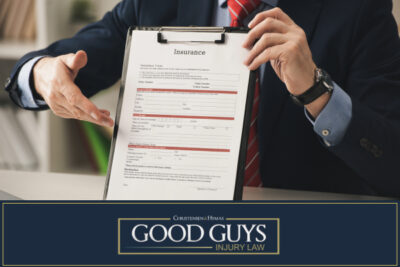
When the other driver doesn’t have enough insurance coverage to fully pay for your losses, your own underinsured motorist coverage can step in to help. But it only works if you follow your policy and file things correctly.
What UIM Insurance Covers
Underinsured motorist coverage is designed to protect you when the other driver’s liability insurance doesn’t cover all your losses. For example, if your medical bills, car repairs, and lost wages add up to more than what the other driver’s insurance pays, your UIM coverage may help make up the difference.
It can help cover a wide range of damages, including medical expenses, pain and suffering, and car damage. But UIM doesn’t cover everything automatically. It will only pay what’s left over after the other driver’s policy maxes out. If you want to use it, you need to show that your damages go beyond their policy limit.
When UIM Applies
Your underinsured motorist coverage comes into play only after the at-fault driver’s liability coverage has been fully used. That means you must file with their insurance company first. Only if their payment doesn’t cover all your losses can you file a claim under your UIM.
UIM coverage is especially helpful when the uninsured or underinsured driver causes serious damage. If your costs are high and the other driver only carries the state minimum insurance, your own policy helps close the gap. It gives you the chance to recover the rest without having to sue the uninsured driver personally. If your damages are higher than the at-fault driver’s coverage, then your UIM kicks in to cover the remaining losses.
Filing a Claim Through Your Own Policy
To use your UIM coverage, you’ll need to open a claim with your own insurance company. This doesn’t mean they’ll automatically pay right away. You’ll need to show that the other driver’s coverage was not enough and that your losses are still unpaid.
Start by giving your insurer proof, such as medical records, the police report, and any documents that show how much money the car accident has cost you. You’ll also need to give them a copy of the at-fault driver’s insurance offer to show that it wasn’t enough.
Filing an underinsured motorist claim is like filing any other insurance claim, but it’s more detailed. You’ll likely have to talk to insurance adjusters, give updates, and maybe even go through negotiations before getting paid.
Steps to File a UIM Claim

Filing an underinsured motorist claim takes a few important steps. These steps help protect your rights and improve your chances of getting the full compensation you deserve after a car accident with an underinsured driver.
Check Your Auto Insurance Policy
Before doing anything else, take a close look at your auto insurance paperwork to make sure you actually have underinsured motorist coverage. Not all drivers carry it — it’s optional in some states — so it’s best to confirm before moving forward.
Look for the part of your policy that lists your UIM coverage limits. That number tells you the most your own insurance company will pay if the other driver’s insurance is too low. If you’re not sure what the numbers mean, your insurance agent or a car accident lawyer can explain it to you. Understanding your coverage ahead of time will help you avoid delays when you’re ready to file.
File a Claim With the At-Fault Driver’s Insurer First
Even if you know the underinsured driver who hit you doesn’t have enough coverage, you still have to file a claim with their insurance company first. This is the only way to prove their liability insurance isn’t enough to cover all your costs.
This step must occur before you can use your underinsured motorist coverage. The other driver’s insurer will make a settlement offer based on their policy limits. Once you get that offer, you can compare it to your total losses. Only after you accept their full limit (and it’s still not enough) can your policy step in to help cover what’s left.
Notify Your Insurer That You Plan to Use UIM Benefits
After you’ve accepted the full payout from the other driver’s policy, let your own insurance company know that you plan to file an underinsured motorist claim. Tell them you’ve received all you can from the at-fault driver’s insurance coverage, but your losses are still higher.
Do this as soon as possible. Waiting too long could risk missing deadlines that may be written into your policy. You may also need to get written permission from your insurer before signing any release forms from the other driver’s company. This helps protect your right to use your UIM benefits and avoids any coverage issues later.
Provide Documentation of Your Total Losses
Your own insurance company will ask for solid proof of your damages. That means you’ll need to gather all your medical bills, repair estimates, receipts, and anything else that shows what the car accident has cost you.
Include things like missed paychecks if you had to take time off work, future medical expenses if you still need treatment, and any evidence of pain and suffering. The more proof you have, the stronger your underinsured motorist claim will be. Be honest, clear, and detailed when you share this information with your insurer.
Be Prepared for Negotiations With Your Insurer
Just because you’re dealing with your own insurance company doesn’t mean they’ll agree with everything you claim. They may try to offer less than what your damages are worth, or argue that some costs shouldn’t be included.
This is why it’s helpful to work with a car accident lawyer if things get complicated. Negotiating can be stressful, especially when you’re still healing. Your lawyer can speak with the insurance adjusters, respond to low offers, and help push for a fair amount. It’s not always easy, but it’s often the only way to get the full compensation you deserve.
FAQs
Will my health insurance cover medical expenses after a car accident?
Yes, your health insurance may help cover medical expenses after a crash, but it often comes with deductibles, co-pays, and limits. It also may not pay for all treatments, especially if they believe the other driver should be responsible. You may also have to pay your health insurer back later if you receive money from a settlement.
What is personal injury protection, and do I need it if I have health insurance?
Personal injury protection (PIP) is extra insurance coverage that pays for your medical bills, lost wages, and other costs after an accident, no matter who caused it. Even if you already have health insurance, PIP can be helpful. It kicks in quickly, may cover things your plan doesn’t, and doesn’t require a long claims process with the other driver’s insurance.
If I don’t have underinsured motorist coverage, who pays my medical costs?
If you don’t have underinsured motorist coverage, you may need to rely on your health insurance and personal injury protection, or you may even have to pay some costs yourself while your claim is being handled. In some cases, you may be able to sue the other driver personally or find other parties who could share responsibility.
Can I still get help with bills if the other driver has insurance, but not enough?
Yes. If the other driver’s insurance doesn’t fully cover medical expenses, you can file a claim under your underinsured motorist coverage. This helps you recover the difference between what you’ve lost and what the other driver’s policy paid.
What should I do first if I’m hurt and worried about medical costs?
Start by getting medical care right away, even if you’re unsure how you’ll pay. Keep all bills and records. Then, call your insurance company and ask what options you have, including personal injury protection or health insurance. If the costs are high and you’re not getting the coverage you need, talk to a car accident lawyer for help.
Call Our Utah Personal Injury Lawyer for a Free Case Consultation

Being in a crash with an underinsured driver can leave you stuck with bills and stress you didn’t expect. You might have serious injuries, car damage, and high medical expenses, but the other driver’s insurance isn’t enough to pay for it all.
That’s where we come in. At Good Guys Injury Law, we help you figure out your rights and options. Our team has handled many underinsured motorist claims, and we know how to deal with your insurance company when they push back or delay payment.
We’ll go over your coverage, explain the process in plain English, and help you build a strong case. Whether you’re using personal injury protection, health insurance, or filing a claim against the other driver, we make sure no step is missed.
Call us today for a free case consultation. There’s no pressure, just helpful answers and honest support when you need it most.





